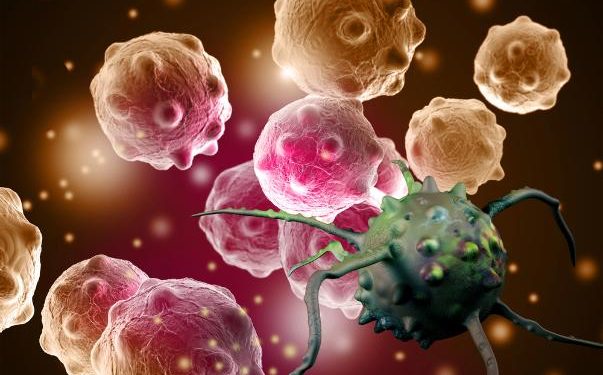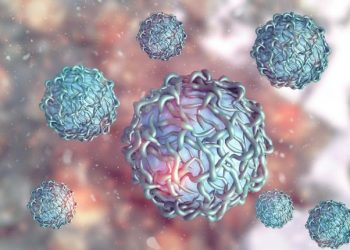An ovarian cyst is a fluid-filled sac in or on an ovary. They can be caused by hormone problems or by conditions like endometriosis. Many are non-cancerous (benign) and go away on their own. Others are cancerous.
Cysts can cause serious symptoms if they grow large, move an ovary out of place (ovarian torsion) or burst open. They can also make it harder to get pregnant.
Symptoms
An ovarian cyst is a thin-walled sack that contains liquid. It can be formed in any part of the ovary and can have many different causes. Some are caused by hormones, like those that help control ovulation, and others by problems in the pelvis, such as endometriosis.
Cysts can be small and won’t cause any symptoms (particularly simple ones). Sometimes they’re discovered by chance during gynaecological investigations for other reasons.
Most of the time, a symptomless ovarian cyst will disappear on its own. However, if it’s large or is causing symptoms, your doctor may want to look at it further. They’ll probably recommend an ultrasound scan and a blood test.
An ultrasound is a safe, painless test that uses sound waves to create pictures of your insides. A doctor may also need to use a keyhole procedure called laparoscopy to see the ovary better.
The most common symptom of an ovarian cyst is pain in your lower belly on one side. This can be sharp or dull and come and go. You might also have mild gastrointestinal symptoms, such as constipation and bloating.
Cysts can form if you have a hormonal problem, such as taking fertility drugs that stimulate ovulation (clomiphene and letrozole). They can also happen when you’re pregnant. The body produces high levels of hormones during pregnancy to support the baby until the placenta forms. This can cause the follicles to grow larger and form cysts on an ovary.
A very rare complication is that the cyst wall can rupture (burst). This often happens after a jerky movement, such as playing tennis. It’s important to get it checked straight away because it can cause heavy bleeding. It can also cut off the ovary’s blood supply, which is life-threatening.
Cysts can also be caused by problems such as uterine fibroids, endometriosis or polycystic ovary syndrome. If they’re caused by a tumour, you might need surgery to remove it. It’s less likely to be cancerous if you’ve been through menopause.
Diagnosis
Your doctor may notice a swelling on your ovary during a pelvic exam or when checking for other reasons. Or a cyst might be discovered by chance, for instance, when doing an ultrasound scan of your uterus or bladder. You might have a blood test to see if you are pregnant. Other examinations, such as a CT scan or laparoscopy (keyhole surgery to look inside your tummy), might also be done to check if the cyst is cancerous and whether it needs treatment.
Most ovarian cysts aren’t cancerous and go away on their own without treatment. But some need to be removed surgically, such as a cyst that’s large enough to cause symptoms or one that’s filled with fluid. Smaller cysts that aren’t causing symptoms usually disappear on their own too.
Some ovarian cysts are caused by hormone problems, such as polycystic ovary syndrome (PCOS). This causes your ovaries to make many tiny cysts with immature eggs in them. This can lead to problems with your menstrual cycle, such as heavy or irregular periods and spotting between your periods. It can also cause pain in your lower abdomen, a feeling of fullness and pressure in your tummy and constipation.
In rare cases, an ovarian cyst can contain tissue that isn’t from your ovary, such as fat cells, teeth or bones. These are called teratomas. They might not need treatment, but if they do, your doctor will probably do surgery to remove the tissue.
The most common complication of an ovarian cyst is that it can rupture. This means the wall of the cyst breaks and the liquid leaks out. This can be painful, but it’s not dangerous. A more serious complication is when the ovary twists around the tissue that supports it. This is called ovarian torsion and is very painful. It can also cut off the blood supply to the ovary and cause internal bleeding. This may need to be treated with surgery.
A doctor will use tests to find out if the ovarian cyst is cancerous and what type it is. These might include an ultrasound scan, a CT scan or an MRI scan. A sample of the cyst may be taken to be tested for cancer cells.
Treatment
Ovarian cysts are fluid-filled or semi-solid pockets in or on one of your ovaries. Most of the time they don’t cause any symptoms and disappear on their own. But sometimes they cause bloating and pelvic pain. The pain can come and go or it can be sudden and severe when the cyst bursts. Most ovarian cysts are harmless, but if they’re cancerous they can be life-threatening. It’s important to see your gynecologist if you have painful, unusually large or rapidly growing ovarian cysts.
The most common treatment is to monitor the cyst with repeated ultrasounds over a few months to make sure it disappears or doesn’t grow larger. Some doctors may prescribe medicine to help relieve pain or prevent further ovarian cysts, such as the birth control pill (or other hormone therapy pills).
If your doctor thinks that your ovarian cyst is cancerous, they will likely perform a blood test to look for a protein called CA-125 that can indicate the presence of cancer cells. They will also take a small piece of your ovary — known as a biopsy — and send it to the laboratory for testing.
In some cases, a gynecologist may recommend surgery to remove the cyst and make sure it is not cancerous. Most ovarian cysts can be removed by a minimally invasive procedure called laparoscopy, in which the surgeon makes a few small cuts in your tummy and uses a thin tube with a camera on its tip to remove the growth. After the surgery, the surgeon will use dissolvable stitches to close the cuts.
Less commonly, the doctor may need to do a more open surgery, called a laparotomy, if the ovarian cyst is very large or if there is a chance it could be cancerous. In this type of surgery, the gynecologist will cut open your tummy and may remove part or all of the ovary and other nearby structures. They will also remove any blood clots or excess fluid from your tummy. The operation can cause significant pain, and you will need to stay in the hospital for a few days.
Prevention
Women and transgender men of reproductive age who don’t use hormonal birth control pills usually form at least one cyst, typically small, on their ovaries each month. It’s normal and harmless, and most cysts go away on their own. It’s rare for ovarian cysts to cause problems, but if they get bigger or rupture, you should see a health care provider right away. If you have a very large cyst that doesn’t go away, it might push against the bladder or bowel and lead to a swollen belly (pelvic pain), pain when you pee, or constipation. If an ovarian cyst ruptures, you might have severe pain, bleeding and possibly vomiting.
Cysts can be caused by pregnancy, hormonal problems like polycystic ovary syndrome, or certain medications, including fertility drugs. They can also be a symptom of an infection in your pelvic area, like a urinary tract or gynecologic infections or a uterine fibroids. Women who have a condition called endometriosis — where tissue from the lining of the uterus grows outside the womb, including in the ovaries, uterus, and fallopian tubes — are more likely to develop ovarian cysts.
People of any age can get ovarian cysts, although they’re more common in young people who are still having periods and in postmenopausal women. Some ovarian cysts may be cancerous.
It’s not possible to prevent most ovarian cysts, but you can try some non-surgical treatments to shrink them and relieve symptoms. They include hot water immersion, acupressure, massage therapy, and natural remedies such as the Chinese herb sanjie zhentong or flaxseed. Some studies support the use of these herbs, but more research is needed.
Cysts are usually nothing to worry about, but if they grow very big or don’t go away, your doctor might recommend surgery. This is done laparoscopically, which is less invasive and much safer than open surgery. It’s also a good idea to stay on the best birth control pill for your situation, and to avoid cigarette smoking, which increases your risk of ovarian cysts. Regular pelvic exams can help you monitor your ovaries and catch any problems early.









